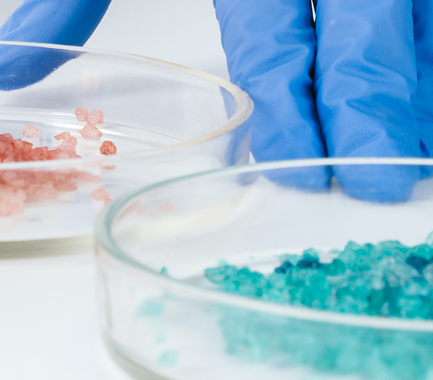
Your contact
PENPET-Team - Hamburg

Jan Prager
Sales
Tel. +49 (0) 40 - 675 7 99 10
sales@penpet.de
Get in touch with us.
Monoethylene Glycol (MEG)
Monoethylene glycol (MEG) is a substance from the group of dihydric alcohols. The term "mono" distinguishes the compound from the polyethylene glycols, which are formed by the reaction of several molecules of ethylene glycol. Monoethylene glycol is mainly obtained from ethylene and the intermediate product ethylene oxide in a two-stage process.
In the chemical industry, monoethylene glycol is used as a raw material for the production of polyester resins, polyester fibers and polyurethanes. The compound is an important starting material for the production of polyethylene terephthalate (PET), which is used, among other things, to manufacture plastic bottles. Due to its temperature resistance, monoethylene glycol is used as an antifreeze additive for coolants in engines, machines and air conditioning systems. It serves as a transmission medium in heat pumps and de-icing equipment at airports. The compound is also used as an absorbent to remove water vapor from natural gas and refinery gas. Monoethylene glycol is used in small quantities in paints, inks and shoe polish.
You can easily and reliably order the required amount of monoethylene glycol (MEG) from PENPET. We look forward to receiving your inquiry for an individual offer. Delivered as a liquid in tank containers, IBCs or drums.
CAS no. 107-21-1
EINECS no. 203-473-3
Molecular formula: C2H6O2
Synonyms: Monoethylene glycol, ethylene glycol, ethylene glycol, ethylene glycol, ethylene glycol, glycol, ethylene alcohol, hydrated ethylene oxide, ethanediol, ethane-1,2-diol, 1,2-ethanediol, 1,2-dihydroxyethane, MEG, EG
Areas of application: Raw material for the production of polyethylene terephthalate (PET), starting material for the production of polyesters and polyurethanes, antifreeze and de-icing agents, absorbents for removing water vapor
More Information
Monoethylene glycol (MEG) is an ethyl compound with each carbon atom having a hydroxy group. This makes the substance the simplest dihydric alcohol. Due to its double functional group, monoethylene glycol is suitable as a starting material for polymerizations and other organic syntheses.
The chaining of several molecules of monoethylene glycol to form higher glycols is of great importance. Here, two hydroxy groups of different molecules combine to form an ether group by splitting off water. More complex glycols such as diethylene glycol and triethylene glycol are by-products of the production of monoethylene glycol. Their proportion can be significantly reduced by using an excess of water in the reaction. The components of the mixture can then be separated from one another in a multi-stage distillation.
At room temperature, monoethylene glycol (MEG) is a colorless, almost odorless liquid with a sweet taste. The viscous compound is electrically conductive and easily miscible with water, acetone and ethanol. Monoethylene glycol is highly hygroscopic.
Upon contact with air, thermal decomposition of monoethylene glycol occurs at the boiling point. This produces harmful, highly flammable and explosive gases such as carbon monoxide, methane and hydrogen.
Monoethylene glycol (MEG) is stable at normal room temperatures and dry storage in closed containers. The substance is combustible but not explosive. However, particularly at higher temperatures, the formation of explosive mixtures of vapors from the compound and the ambient air is possible. The vapors are dense and heavier than air. They can spread unnoticed and accumulate on the ground. To avoid explosions, monoethylene glycol should therefore also be kept away from distant sources of ignition such as electrical discharges, welding sparks, hot surfaces and open flames.
Monoethylene glycol reacts with strong bases, strong acids and strong oxidizing agents, generating a lot of heat. There is a risk of explosion in the event of uncontrolled reactions. Monoethylene glycol attacks aluminum. Containers made of polypropylene, polyethylene and stainless steel are suitable for storage.
Monoethylene glycol (MEG) is toxic and if swallowed is just as harmful as methanol. The compound is rapidly oxidized to glycolic acid and oxalic acid after ingestion. Monoethylene glycol poisoning damages the central nervous system, heart and kidneys. Untreated ingestion can lead to death. In addition, monoethylene glycol triggers symptoms such as nausea, dizziness, vomiting, muscle cramps, breathing difficulties, blurred vision and cardiac arrhythmia. If poisoning is suspected, seek immediate medical attention.
Direct contact with monoethylene glycol is irritating to skin, eyes and the respiratory tract. The affected parts of the body should be rinsed thoroughly with water. After inhaling monoethylene glycol, affected persons should be taken to fresh air immediately. If coughing or difficulty breathing persists, seek medical attention.
The compound is only broken down in the soil and in the water within weeks. As a liquid, it spreads quickly in nature. The release of concentrated amounts can lead to serious poisoning and deformities in animals.